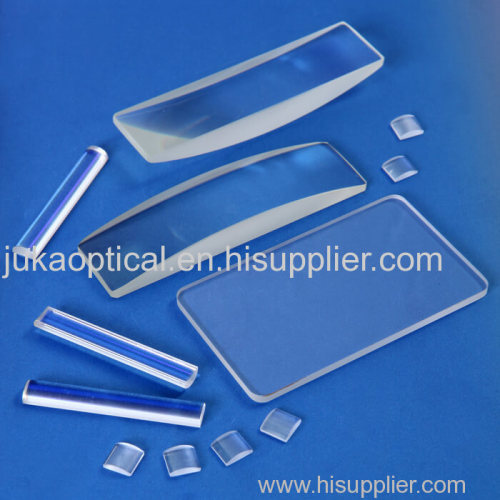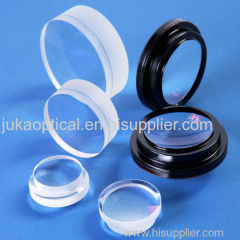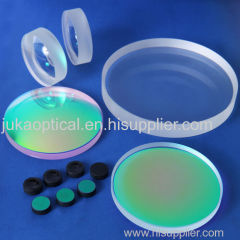|
Sichuan JUKA Optical Technology Co.,Ltd
|
China Cylindrical Lens Optics Manufacturer Plano Convex Cylindrical Lens
| Price: | 50.0 USD |
| Payment Terms: | T/T |
| Place of Origin: | Sichuan, China (Mainland) |
|
|
|
| Add to My Favorites | |
| HiSupplier Escrow |
Product Detail
JUKA Optical is a prefessional plano convex cylindrical lens manufacturer in China.
JUKA Optical is a prefessional plano convex cylindrical lens manufacturer in China. Cylindrical lens optics is a common type of aspheric lens. the intersections of the meridian and sagittal cross-sections are the intersection of the two arcs and the two parallel straight lines. If the imaging properties of the two sections are described by spherical systems, one section has optical power, while the other section has no optical power. When a parallel laser beam passes through the cylinder lens, the focal point can be pulled into a line in one direction. this feature of cylindrical lens optics has its specific use in some special occasions.
for example, in some missile laser systems, multiple small radius cylinder lenses are used for imaging. the optical cylinder lens have several shape types, such as plano convex cylindrical lens, plano concave cylindrical lens, meniscus cylindrical lens,etc.

Cylinder lenses are widely used in several manufacturing industries and industries such as electronic optical metrology verification, laser scanners, spectroscopy, laser diode output cosmetics, and light film lighting fixture microscope imaging.
1) Shape the collimated light source into a linear light source
this is the most wide use of cylindrical lens optics. for example, it can convert a spot light spot into a line spot, or change the height of the image without changing the desired width.
2) the collimation of diode output beam
the laser diode output beam diverges in an asymmetric form. Its collimation work is more challenging. For example, for a diode light source with a divergence angleθ1xθ2 = 10°x40°, if it only uses a standard spherical lens, it can only be collimated in a single direction, and divergence or convergence will occur in the other direction. Using a cylinder lens can resolve the problem into two one-dimensional directions. by using two mutually orthogonal cylinder lenses in combination, two directions can be collimated simultaneously.
with the rapid development of high technology, cylinder lenses are more and more widely used.
Cylindrical lens is used to correct astigmatism in the eye, and, in range finders, to produce astigmatism, stretching a point of light into a line.. They are available in either plano concave or plano convex configurations. Plano concave cylindrical lenses have a negative focal length and are used for image reduction or to spread light. Plano convex cylindrical lenses have a positive focal length, which makes them ideal for collecting and focusing light for many imaging applications.
| Material: | H-K9L/UV Fused silica |
| Focal Length Tolerance: | ±1% |
| Diameter Tolerance: | 0/-0.1 |
| Thickness Tolerance: | ±0.1 |
| Scratch/Dig: | 60/40 |
| Eccentricity: | 3' |
| Clear Aperture: | >90% |
| Coating: Designed Wavelength: | AR or BBAR 632.8nm |









